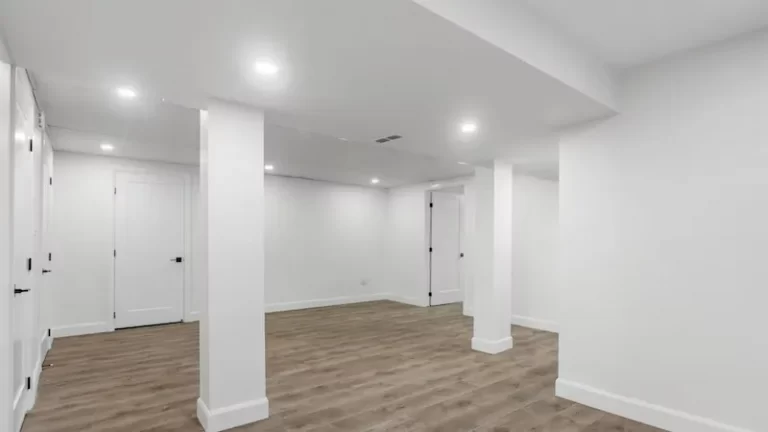0-10V Dimming for Multiple Fixtures: Your Ultimate Wiring Guide
You’ve installed a new set of sleek, modern 0-10V dimmable LED fixtures. You connect them all to a single dimmer, expecting smooth, synchronized control. Instead, you’re met with a frustrating light show of flickering, strobing, and uneven dimming—or worse, some lights don’t respond at all. This is a common problem that leaves many wondering where they went wrong.
The issue often isn’t the fixtures themselves, but a misunderstanding of how to properly wire multiple 0-10V drivers to one controller. Unlike simple light switches, 0-10V systems require a specific wiring approach to function correctly. This guide breaks down the problem and provides a clear, step-by-step solution for achieving flawless, synchronized dimming across all your fixtures.
You'll Learn About
What is 0-10V Dimming and Why Is It So Popular?
0-10V dimming is a reliable, analog method for controlling the brightness of LED and fluorescent lights. It works by sending a low-voltage direct current (DC) signal from a dimmer switch to the light fixture’s driver. The driver interprets this voltage: 10V means 100% brightness, 5V means 50% brightness, and 1V or less typically means the light is at its minimum level.
This method is favored in commercial and high-end residential applications for its smooth, flicker-free performance and its ability to control many lights at once. However, its reliability hinges entirely on correct installation. When you connect multiple fixtures, you’re not just wiring lights; you’re creating a small communication network, and every component needs to speak the same language.
The Core Challenge: Incorrectly Wiring Multiple Drivers
The most frequent point of failure in a multi-fixture setup is the wiring of the low-voltage control circuit. Many people assume they can wire the dimming controls in the same way they wire the main power, but this is a critical mistake. The solution lies in understanding the two separate circuits involved: the high-voltage power circuit and the low-voltage control circuit.
Each fixture has a driver that needs both high-voltage power to operate and a low-voltage signal to dim. Getting these two wiring schemes right is the key to a successful installation. If you’ve ever had to tell a professional you’re going a different way with a project, you know how important clear communication and planning are from the start; it’s the same with wiring. Consider reading up on how to tell a contractor you selected someone else for tips on managing project communications.
A Step-by-Step Guide to Perfect Multi-Fixture Dimming
Follow these steps carefully to ensure your 0-10V dimming system works exactly as intended, providing smooth and synchronized control over all your light fixtures.
Step 1: Verify All Your Components are Compatible
Before you even touch a wire, confirm that every component is designed for 0-10V dimming. This includes the dimmer switch, all LED fixtures, and their internal drivers. Using a non-dimmable fixture or an incompatible dimmer type is a guaranteed recipe for failure. Check the specifications on each device to ensure they are all 0-10V compatible.
Incompatible parts can lead to flickering, buzzing, or a complete lack of dimming control. It’s a foundational step that, if skipped, will undermine the entire project.
Step 2: Wire the Low-Voltage Control Circuit Using the “Daisy Chain” Method
This is the most critical step. The low-voltage control wires, typically one purple (+10V) and one gray or pink (-/common), must be wired in parallel. The most effective way to do this is by “daisy-chaining” them together from one fixture to the next.
Here’s how:
- Run the purple and gray wires from your 0-10V dimmer switch to the first light fixture, connecting them to the corresponding purple and gray wires on the driver.
- From that same first fixture, run a new set of purple and gray wires to the second fixture, connecting purple-to-purple and gray-to-gray.
- Continue this process, linking each fixture to the next one in the line. The last fixture in the chain will only have one set of control wires coming into it.
This creates a single, continuous low-voltage circuit that ensures every driver receives the exact same voltage signal from the dimmer simultaneously.

Step 3: Calculate and Respect the Dimmer’s Driver Limit
A very common mistake is overloading the dimmer switch with too many drivers. Every 0-10V dimmer has a maximum current it can “sink” (absorb) from the drivers. Each driver “sources” (outputs) a small amount of current on the control circuit. If the total current from all connected drivers exceeds the dimmer’s sinking capacity, the system will fail.
To calculate this, check the specifications for your dimmer (max sink current in milliamps, mA) and your LED drivers (source current in mA). A high-quality driver typically sources around 0.5mA, but this can vary. A standard dimmer might have a sink capacity of 50mA. In this case, you could connect up to 100 drivers (50mA / 0.5mA per driver). Always check the datasheets for your specific products.
Step 4: Wire the High-Voltage Power Circuit in Parallel
While the control wires are daisy-chained, the main power for the fixtures (the high-voltage AC wires, typically black for hot and white for neutral) should be wired in a standard parallel configuration. Each fixture needs to receive the full line voltage from the circuit breaker.
You can run a primary power line and use junction boxes to tap off power for each fixture individually. Crucially, keep the low-voltage dimming wires separate from the high-voltage power wires as much as possible. Running them in the same conduit without proper separation can induce electrical noise, causing the lights to flicker or behave erratically.
Troubleshooting Common 0-10V Dimming Problems
Even with a careful installation, issues can arise. Here’s a quick guide to diagnosing and fixing the most common problems you might encounter when dimming multiple fixtures.
Problem: Lights are Flickering or Behaving Erratically
Flickering is often a symptom of electrical interference or an overloaded dimmer. First, check that your low-voltage control wires are not running right alongside high-voltage AC cables for long distances. If they are, try re-routing them. Second, double-check your driver limit calculation to ensure you haven’t exceeded the dimmer’s capacity.
Problem: Lights Do Not Dim to the Same Level
If some lights are brighter than others at the same dimming level, it could be due to voltage drop on very long runs of control wiring. This is more common in large commercial spaces. Using a thicker gauge wire (e.g., 18 AWG) for the low-voltage circuit can help. Another cause can be mixing different models of drivers, which may have different dimming curves; always use identical drivers for all fixtures on the same circuit.
Problem: Lights Won’t Turn Off Completely
This is often by design. A 0-10V signal controls the light output from 100% down to a minimum level (often 1% or 10%). It does not turn the power off. To completely shut the lights off, you need a dimmer that includes an integrated power switch or relay, or a separate wall switch to cut the main power to the fixtures.
Pro Tips for a Flawless Multi-Fixture Installation
Achieving a professional-grade lighting setup requires attention to detail. Complex installations, like a full kitchen remodel involving a dishwasher with top controls installation, benefit from careful planning of all electrical systems in advance.
Wire Gauge and Distance Matter
For most residential and small commercial jobs, standard 18 AWG wire is sufficient for the 0-10V control signal. However, for runs longer than 300 feet, voltage drop can become an issue, leading to inconsistent dimming. In these cases, consider using a thicker 16 AWG wire to ensure signal integrity from the dimmer to the very last fixture.
Sinking vs. Sourcing: A Quick Explanation
In nearly all modern 0-10V systems, the LED driver sources the 10V signal, and the dimmer sinks (or reduces) that voltage to control the light level. This is the most common standard. Just be aware that both components must be compatible—one must be a source, and the other a sink. Mixing them will result in a non-functional system.
| Dimmer Sink Capacity (mA) | Driver Source Current (mA) | Maximum Number of Drivers |
|---|---|---|
| 25 mA | 0.5 mA | 50 |
| 50 mA | 0.5 mA | 100 |
| 50 mA | 1.0 mA | 50 |
| 100 mA | 0.5 mA | 200 |
| 100 mA | 2.0 mA | 50 |
Achieve Perfect, Synchronized Dimming Every Time
Wiring multiple 0-10V fixtures might seem complex, but it boils down to a few core principles. Always keep the low-voltage control circuit separate from the high-voltage power circuit. Daisy-chain the purple and gray control wires in parallel from fixture to fixture, and never exceed the driver limit of your dimmer switch.
By following these guidelines, you can solve the common frustrations of flickering and uneven performance, creating a robust and reliable lighting system with perfectly synchronized control. Whether for a workshop, retail space, or modern home, mastering this technique will put professional-level lighting control at your fingertips. Even outdoor fixtures need protection from the elements; for instance, you wouldn’t want to worry about whether can falling acorns damage a roof and by extension, your exterior wiring.

